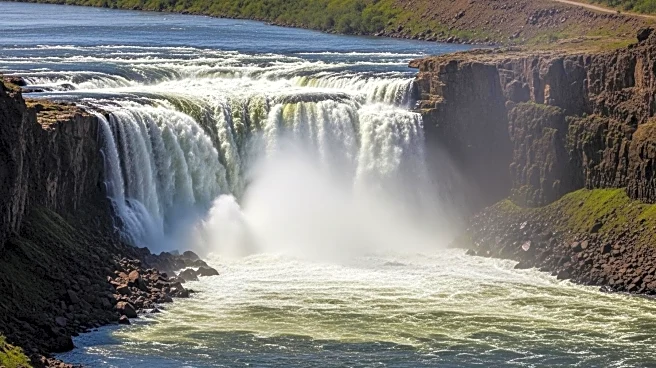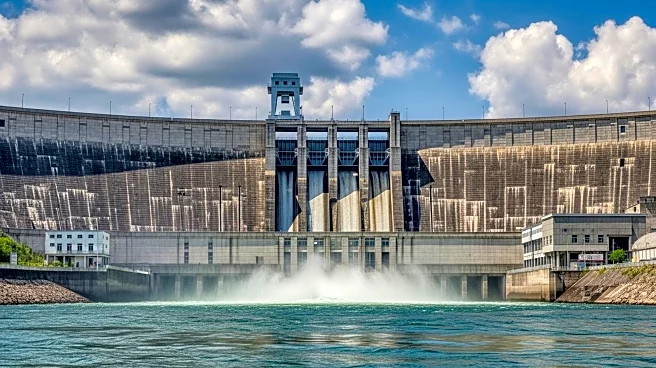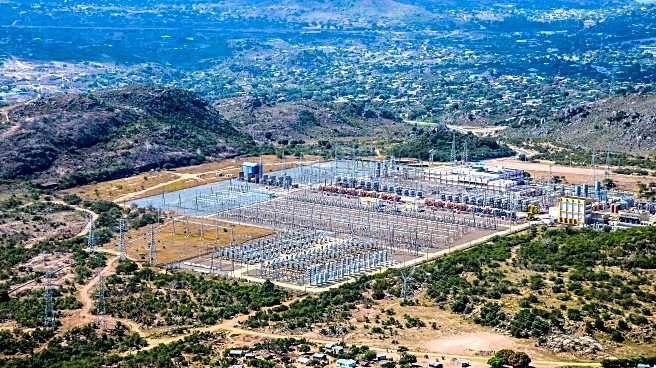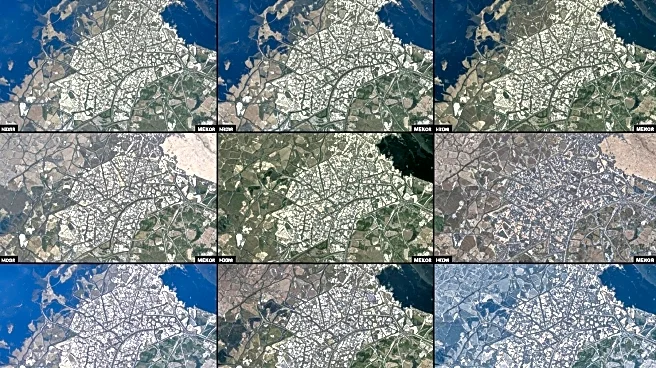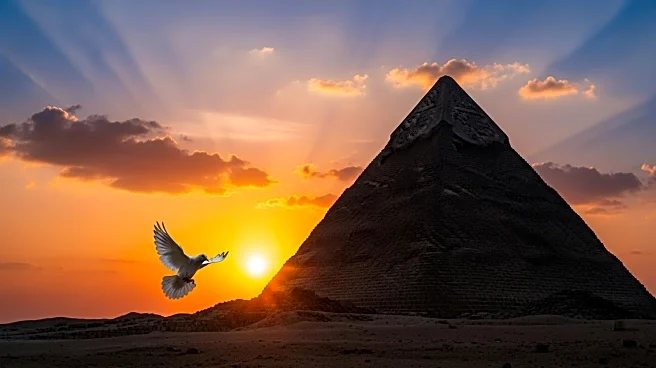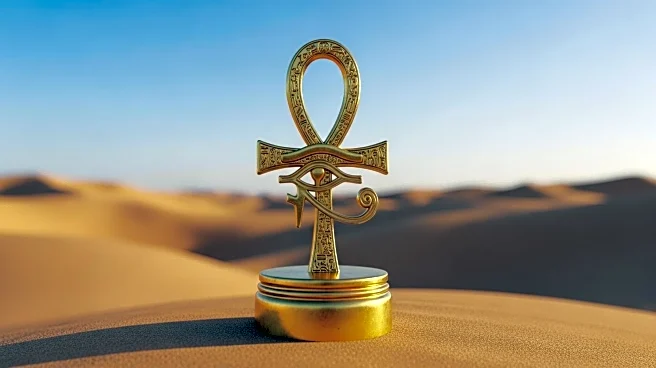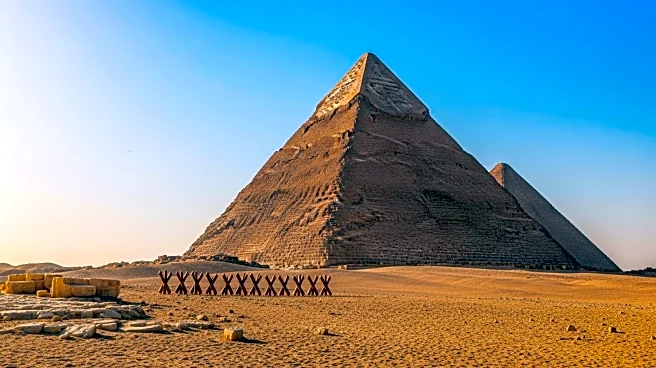What's Happening?
Ethiopia is set to inaugurate the Grand Ethiopian Renaissance Dam (GERD), a massive hydroelectric project on the Blue Nile. The dam, costing approximately $5 billion, has become a symbol of national pride for Ethiopia, uniting its population despite ethnic divisions. However, Egypt fears the dam will significantly reduce its share of Nile waters, which are crucial for its population and agriculture. The dam's reservoir stores 64 billion cubic meters of water, potentially impacting Egypt's annual share of 55.5 billion cubic meters.
Why It's Important?
The GERD represents a shift in regional power dynamics, with Ethiopia asserting control over Nile waters historically dominated by Egypt. This development could lead to water shortages in Egypt, affecting its agriculture and population. The dam also positions Ethiopia as a major energy producer in Africa, with plans to sell electricity to neighboring countries. The geopolitical implications are significant, as water security is a critical issue for Egypt, and the dam challenges longstanding treaties and agreements.
What's Next?
Egypt is exploring alternative water sources, including building the world's largest water treatment plant and drilling wells. The country is also adjusting its agricultural practices to cope with reduced water availability. Diplomatic efforts continue, with Ethiopia open to discussions on water release and dam safety. The situation remains tense, with potential for further negotiations or conflict resolution efforts.
Beyond the Headlines
The GERD's completion marks the end of colonial-era agreements favoring Egypt, highlighting Ethiopia's growing influence in the region. The dam's construction was funded domestically, showcasing Ethiopia's determination to achieve energy independence. The project also raises concerns about potential environmental impacts, including changes in seismic activity due to the massive water reservoir.
